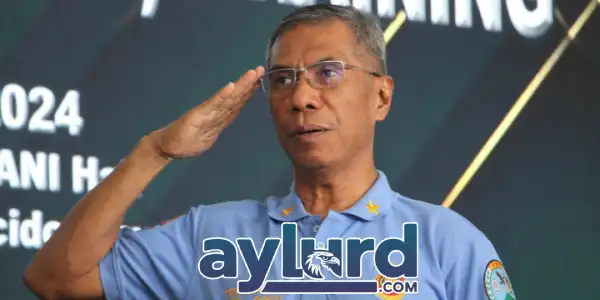PNP Chief Gen. Nicolas Torre III Announces 5-Minute Emergency Response Time Initiative 🚓⏱️
The Philippine National Police (PNP) is taking a bold step to improve emergency response times in Metro Manila. Gen. Nicolas Torre III has announced the ambitious plan for a 5-minute response time – 5-Minute Response Time PNP. Here’s what this means for Filipino citizens, and how it could transform police operations in the country. 👮♀️🚨
Understanding the 5-Minute Response Time: A Key Change in Police Operations
On June 5, 2025, Gen. Nicolas Torre III, Chief of the Philippine National Police, unveiled a game-changing initiative to reduce emergency response times to just five minutes in Metro Manila. This marks a significant leap from the previous response time of seven minutes and is a part of the PNP’s ongoing efforts to modernize its operations and ensure faster, more effective police interventions in times of need.
Key Features of the 5-Minute Response Initiative
- Immediate Implementation:
The initiative is set to begin in Metro Manila, with plans to expand to other regions based on its success in the capital. By improving the response time, the PNP hopes to save lives, provide quicker support during emergencies, and improve public trust in law enforcement. - Streamlined Operations:
To achieve this, police officers will be reassigned to mobile patrol units instead of being stationed at traditional, fixed police boxes. This shift aims to increase mobility, reduce delays, and enable officers to respond swiftly when emergencies arise. - Enhanced Communication:
With better communication tools, such as radios and digital platforms, officers will be able to coordinate faster and ensure they are aware of every emergency in real time. This level of preparedness ensures faster mobilization during urgent situations.
How Will This Affect the Public and Police Force?
Impact on Police Services
Here’s a quick overview of the expected changes and benefits of the 5-minute response policy:
| Aspect | Before the Change | After the Change |
|---|---|---|
| Response Time | 7 minutes average | 5 minutes maximum |
| Police Visibility | Limited to fixed posts | Increased with mobile patrol units |
| Public Trust | Moderate | Expected to rise with faster response times |
| Operational Efficiency | Stationary police boxes | Dynamic deployments, increased mobility |
5-Minute Response Time PNP Key Benefits:
- Faster Response: This initiative guarantees faster emergency responses, especially in high-density urban areas like Metro Manila, where quick action is crucial.
- Improved Public Safety: With mobile patrols, police can reach crime scenes, accidents, or medical emergencies more rapidly, potentially saving lives.
- Economic Impact: Quicker police intervention can reduce the financial impact of crimes and accidents by containing situations before they escalate.
Challenges to Overcome in Implementing the 5-Minute Response Time
While the initiative brings numerous benefits, there are also challenges to consider:
- Resource Allocation:
As officers will be reassigned to mobile patrols, ensuring they have the necessary tools and support for effective action is vital. The PNP will need additional vehicles, communication systems, and updated technologies to ensure success. - Training and Coordination:
Police officers must be well-trained in handling multiple tasks during high-pressure situations. The success of this program depends heavily on effective training and team coordination. - Public Awareness:
Citizens must understand the new system, the importance of calling the 911 emergency number, and how the mobile units will respond. Public awareness campaigns will be necessary to ensure smooth implementation.
Frequently Asked Questions (FAQs)
Why is the PNP focusing on a 5-minute response time?
- The PNP aims to improve public safety by reducing emergency response times. Quicker responses can save lives, prevent further harm, and restore order in emergencies.
How will the PNP ensure that officers meet this 5-minute target?
- Officers will be reassigned to mobile patrol units that allow them to be more mobile and responsive to emergencies. Improved communication and real-time updates will also contribute to meeting the target.
What if the 5-minute response time is not met?
- While the goal is a 5-minute response time, some situations may cause delays. However, officers will be trained to act as quickly as possible and communicate any potential delays effectively.
Can this initiative expand to other regions?
- Yes, if successful in Metro Manila, the PNP plans to extend the initiative to other regions across the country.
How will this change affect small local precincts?
- Some underutilized precincts may be deactivated, but officers will be reassigned to mobile patrols, ensuring greater coverage and quicker responses across all areas.
Conclusion: A Bold Step Toward a Safer Philippines
Gen. Nicolas Torre III’s announcement of the 5-minute emergency response time is a game-changing move for the Philippine National Police. The initiative promises to enhance public safety and restore public trust in law enforcement. By making the PNP more mobile and responsive, this policy will contribute significantly to the fight against crime, accidents, and other emergencies.
While challenges remain, the ultimate goal is to ensure that help is available when and where it’s needed most. As the PNP moves forward with this plan, it will undoubtedly be a step toward a safer, more efficient, and more responsive police force for the Filipino people. 🇵🇭🚓
Disclaimer:
This article is based on official announcements as of June 2025. Information regarding police response times and plans may evolve, and readers are advised to consult official PNP channels for the latest updates.

Ken Lurd, born Ken Martin, is a seasoned writer and content creator from the Philippines with over two decades of experience in storytelling, digital media, and creative strategy. Now in his 40s, Ken has built a solid reputation for blending real-life insight with engaging narratives that resonate with Filipino and global audiences alike.
From lifestyle blogs and social commentaries to thought-provoking essays and branded content, Ken’s work reflects depth, authenticity, and a passion for connecting with readers. Whether he’s writing under the name Ken Lurd or speaking at content workshops, his mission remains the same: to inform, inspire, and ignite meaningful conversations.
When he’s not writing, Ken enjoys local travel, coffee-fueled brainstorming sessions, and mentoring up-and-coming creators across the country.
Follow and Subscribe for Daily Updates!Facebook: AyLurdTikTok: @AylurdYouTube: AyLurd



